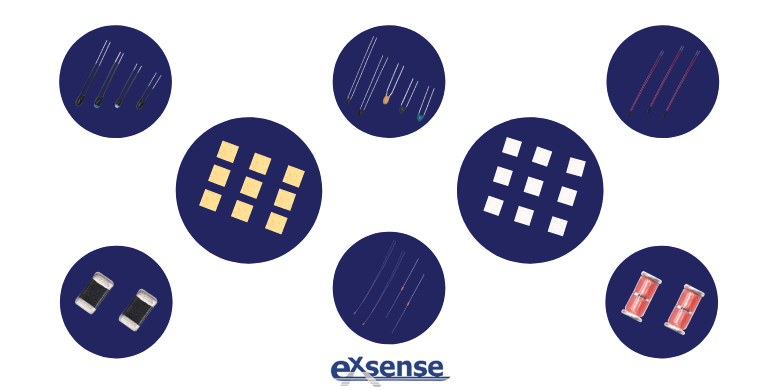
NTC thermistor is made by using the characteristic that the resistance value of ceramic semiconductor materials decreases with increasing temperature, which can express different resistance values at different temperatures, and this characteristic can be used to feed back the temperature by measuring the resistance value corresponding to the voltage division of the NTC thermistor. Since the relationship between resistance and temperature (R-T curve) of NTC thermistor is highly nonlinear, some approximation must be used in practical system design.
The way approximations are calculated according to accuracy requirements can be divided into the following three types:
First, the first approximation method
△R=K·△T
where K is the negative temperature coefficient, △T is the temperature change difference value, and △R is the resistance value change caused by the temperature difference. It assumes that the resistance value change of the NTC thermistor in a certain temperature range has a linear relationship with the temperature change, so it is only suitable for a very narrow temperature change range, which can only be used for temperatures that are almost unchanged over the entire temperature range K. The smaller the temperature range, the closer the R-T curve is to linearity, and the closer the calculated resistance value is to the actual value, that is, the higher the accuracy and precision. Conversely, the wider the temperature range of the application, the more linear the R-T curve will be, and the greater the deviation between the calculated value and the actual value. Therefore, the first approximation method, as the temperature measurement formula of NTC thermistor, is only suitable for application scenarios where the accuracy requirement is not high and the temperature range is relatively narrow.
Second, β formula
R(T)=R(T0)·e β(1/T-1/T0)
where R(T) is the resistance value at temperature T in Kelvin, and R(T0) is the reference point at temperature T0. β formula is now the most commonly used calculation method, and it can be used to obtain β value of a single material constant. β formula requires a two-point calibration, and the accuracy depends on the interval between temperature T and T0. The smaller the temperature interval between T and T0, the higher the accuracy of the calculation, and the maximum temperature interval error of 10℃ is not more than ±1℃. Since the β value of NTC thermistor is not constant in practical applications, this is due to the material composition that causes it to vary (can up to 5K per ℃), so the value measured by the β formula over a wide operating temperature range will have some error compared with the measured value.
Third, Steinhart-Hart equation
1/T=C1+C2InRT+C4(InRT)3
The unit of temperature T is Kelvin, and C1, C2 and C4 are called Steinhart-Hart parameters, depending on the model of NTC thermistor. The resistance values of three groups of NTC thermistors at different temperatures can be measured and the three simultaneous equations can be solved by substituting the above equation to obtain the three parameters of C1, C2 and C4, and the most accurate least squares method can also be used to calculate the three parameter values. The Steinhart-Hart equation is usually accurate to about ±0.15℃ in the range of -50~150℃, which is sufficient for most application scenarios. If it is necessary to improve the resolution accuracy to 0.01℃ or even higher accuracy, the interpolation method can be further used for simulation calculation.
EXSENSE Electronics Technology Co., Ltd. focuses on the research, development and production of various NTC thermistor components, which are used in various fields with their advantages of high temperature measurement accuracy, fast response speed, great performance stability and simple use, including smart home, automobile, office automation, smart wear, new energy, etc. For different application scenarios and application methods, the accuracy required by EXSENSE Electronics will also choose different calculation methods and different curve-fitting temperature intervals according to the actual needs of customers to ensure the accuracy of temperature measurement.



